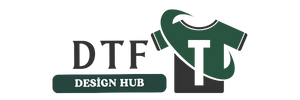DTF transfers vs screen printing is a common debate for anyone putting artwork on textiles, and understanding the trade-offs helps you budget more accurately. From color flexibility to durability and turnaround times, each method brings trade-offs that matter for different projects. If you’re weighing DTF transfer cost in your planning, you’ll want to compare setup requirements and per-piece expenses alongside other factors. This overview covers factors like fabric compatibility, image detail, and long-term wear so you can choose confidently. When you balance your project size and delivery timeline, you’ll see how the choice affects both quality and cost.
Think of this decision as choosing between digital garment transfers and conventional ink-on-textile techniques. The digital route relies on printed films and heat activation to recreate full-color imagery, while the traditional method uses layered ink through screens for bold, durable results. Each approach has its own cost structure, equipment needs, and impact on fabrics, so evaluating your expected volume and design complexity helps determine the most economical path. By framing the choice this way, you can map out a practical budget that aligns with your textile project from single-item prototypes to full-scale launches.
DTF transfers vs screen printing: cost, durability, and where each shines for budget-minded projects
When evaluating cost, DTF transfers vs screen printing carry different upfront investments and per‑unit economics. To start with DTF, you’ll typically invest in a compatible printer, printing inks, roll or sheet film, a heat press, and finishing equipment like a powder shaker and curing area. The up-front cost can be moderate to substantial, but you gain flexibility for small to medium runs without needing custom screens for every design. Screen printing, by contrast, requires upfront purchases of screens, emulsion and multiple colors, exposure units, and a space suitable for drying and curing. The initial investment can be higher if you’re producing many designs in multiple colors, but the per‑unit cost drops as you scale up.
Durability, feel, and color quality become decisive factors in choosing between methods. DTF transfers produce a smooth, flexible finish and a wide color range with excellent gradients and photo‑like images, often behaving similarly to DTG. A potential drawback is that the print edge may feel slightly raised depending on transfer thickness and fabric. Screen printing lays down thicker ink films that yield a bold, matte finish with strong color saturation for simple, solid designs, but the texture is more noticeable and the print can crack if the fabric stretches or the ink isn’t tuned and cured correctly.
Best printing method for budget: cost breakdown and decision framework for DTF vs screen printing
A practical budget analysis starts with a clear view of cost drivers: upfront setup versus per‑unit pricing. DTF transfer cost includes digital printing, film, adhesive, and finishing steps, which can make the per‑piece price higher for very large runs. Screen printing cost, on the other hand, benefits from lower per‑unit expense when printing thousands of items of a simple design, thanks to shared screens and faster throughput once setups are complete. The break-even point hinges on run size, design complexity, and the number of colors involved.
For decision making, use a practical framework: opt for DTF transfers when you expect frequent design changes, smaller batches, or highly detailed, multi‑color artwork where avoiding new screens saves time and waste. Choose screen printing for long runs of straightforward designs to minimize per‑unit costs and maximize consistency. Consider fabric type and turnaround needs as well—DTF offers broad fabric compatibility and quick iteration for varied products, while screen printing shines on classic cotton garments with bold color blocks. When comparing to traditional printing, evaluate whether the flexibility and lower upfront risk of DTF outweigh the potentially higher per‑unit cost for large orders, or whether the lower unit cost of screen printing makes it the best option for budget and scale.
Frequently Asked Questions
DTF transfers vs screen printing: how do the DTF transfer cost and screen printing cost compare for small runs?
For small runs, DTF transfer cost per piece is usually higher than the per‑unit cost of screen printing, since each transfer involves digital print, film, and adhesive. However, DTF avoids creating new screens for every design change, which can save time and money when you need quick iterations. Screen printing, with its upfront costs for screens and setup, becomes cheaper per unit only as you scale to larger runs. If you’re printing a limited run with many colors or photos, DTF can be economical; for a larger run of a simple design, screen printing typically offers the best printing method for budget.
DTF transfers vs traditional printing: which is the best printing method for budget, and how do DTF transfer cost and screen printing cost factor in?
When budgeting, DTF transfers vs traditional printing each have trade‑offs. DTF transfer cost tends to stay higher per piece in large-volume runs but pays off for small runs with complex artwork since you avoid the cost of making new screens. Screen printing, while requiring a higher upfront investment, usually delivers the lowest per‑unit cost in thousands of shirts with a simple design. Durability and fabric compatibility also influence value. If you expect frequent design changes or a varied lineup, DTF is often the best printing method for budget for small to mid runs; if you’re producing a large volume of straightforward designs, screen printing generally offers the best long‑term value.
| Aspect | DTF transfers | Screen printing | Notes / Best Use |
|---|---|---|---|
| Upfront investment | Moderate to substantial (printer, inks, film, heat press, curing equipment) | Higher initial costs (screens, emulsions, exposure units, multiple colors) | Good for small to medium runs with flexibility; avoids custom screens for every design. |
| Per-unit cost | Higher for very large runs due to digital print, film, and adhesive steps | Lower per unit as runs scale, especially for simple, color-limited artwork | DTF can be economical for small batches or frequent design changes; screen printing shines with long runs of the same design. |
| Look and feel | Smooth, flexible finish; close to DTG; excellent gradients and photo-like detail; edge may feel slightly raised | Thicker ink layers; bold, matte finish; strong color saturation; texture is more noticeable | Choose based on desired texture: subtle and photoreal for DTF vs bold, solid blocks for screen printing. |
| Color handling | Excellent color range; handles gradients well | Excellent solid color blocks and punchy logos | DTF is preferable for multi-color photos; screen printing for high-visibility logos and bright blocks. |
| Fabric compatibility | Versatile: cotton, blends, polyester, canvas, microfiber; works on dark/light fabrics with proper base | Strong on 100% cotton and many blends; requires adjustments for polyester, nylon, or specialty fabrics | DTF offers broad fabric compatibility; screen printing tends to favor traditional cotton garments. |
| Production speed / turnaround | Fast for small to medium runs; multiple steps can add lead time if not optimized | Very fast for high-volume, single-design runs; setup and separations can bottleneck multi-color work | DTF provides quick iteration for changes; screen printing excels with large-volume, simple designs. |
| Quality control & consistency | Digital consistency across batches; verify thickness and curing for each transfer | Consistency depends on mesh, ink, and curing; excellent when done right but susceptible to curing errors | Digital transfer enables uniform results across runs; good screens and curing practices ensure strong batch consistency. |
| Use cases & budgeting tips | Small runs, complex or changing designs; cost-effective with less setup for variations | Large runs, simple designs with color blocks; per-unit cost advantage grows with scale | Small, detailed designs? Favor DTF. Large volumes of simple designs? Favor screen printing. Consider fabric type, lead times, and potential reprints when budgeting. |
Summary
DTF transfers vs screen printing presents a classic budget-and-quality trade-off for apparel decoration. If you prioritize flexibility and detailed artwork for smaller runs, DTF offers a practical and cost-aware option. If you’re planning large volumes of straightforward designs and aim to minimize per-unit costs, screen printing often delivers better value over time. The best choice depends on your project size, design requirements, fabric choices, and delivery timelines. By weighing upfront setup costs, per-unit pricing, durability, and fabric compatibility, you can optimize both your budget and your end-product. If you’d like a personalized budget analysis or sample tests to compare DTF transfers vs screen printing for your designs, I can help map out a plan with estimated costs, timelines, and quality benchmarks for your unique needs.

